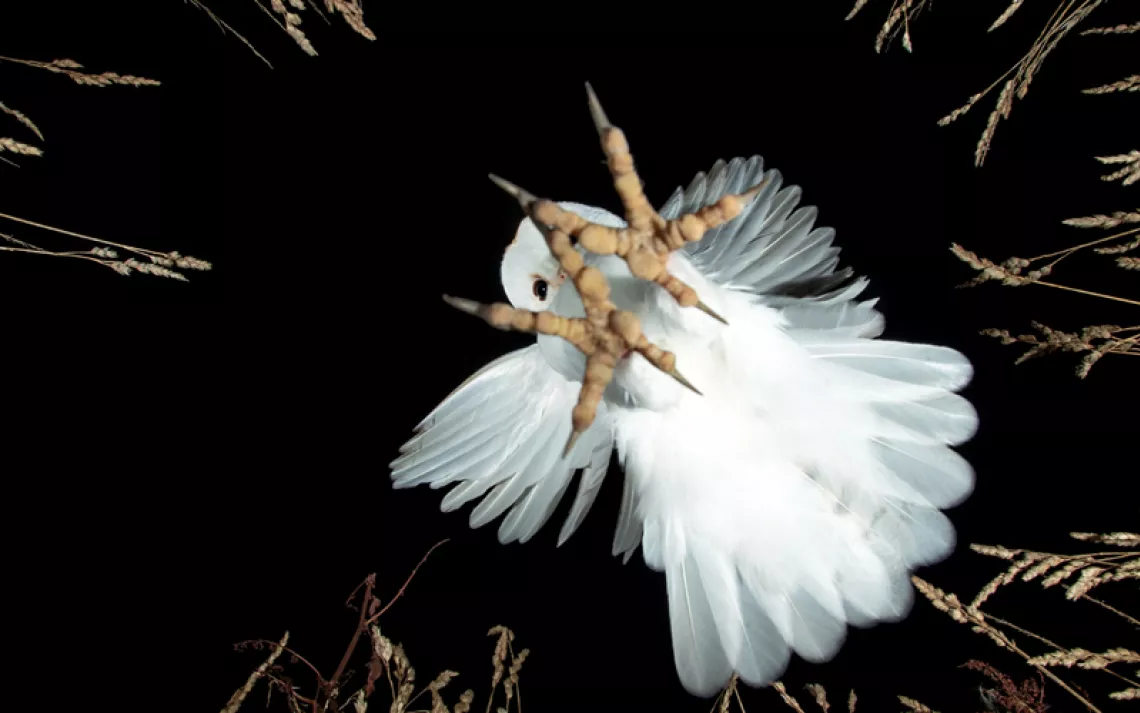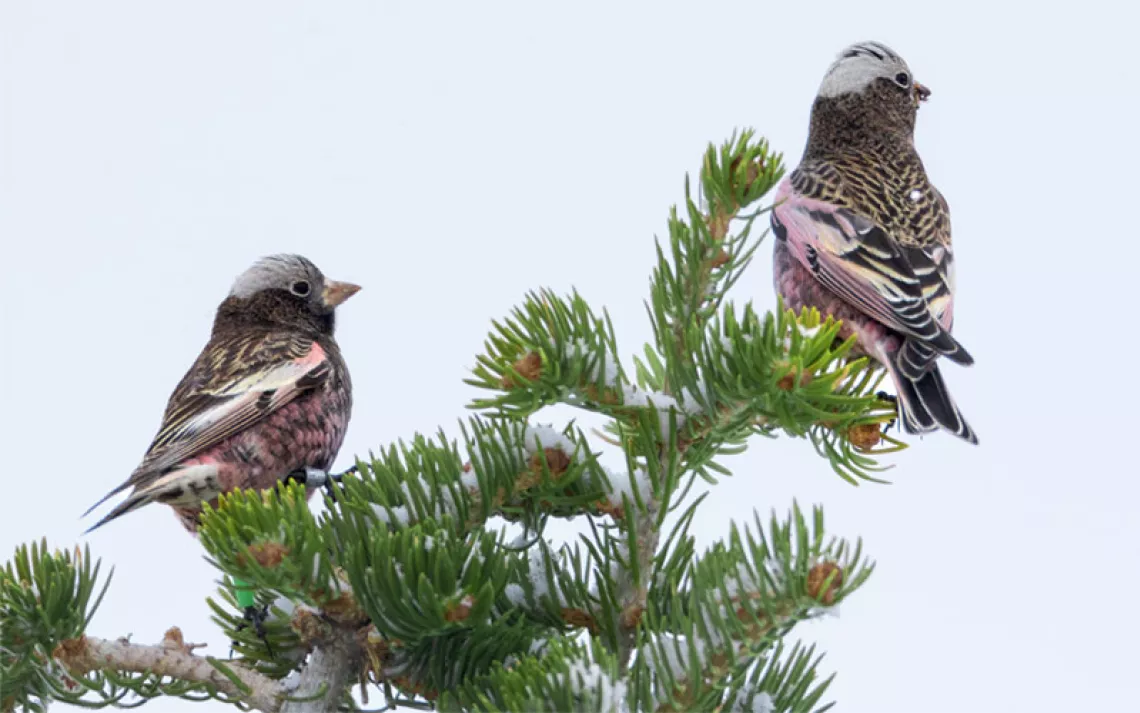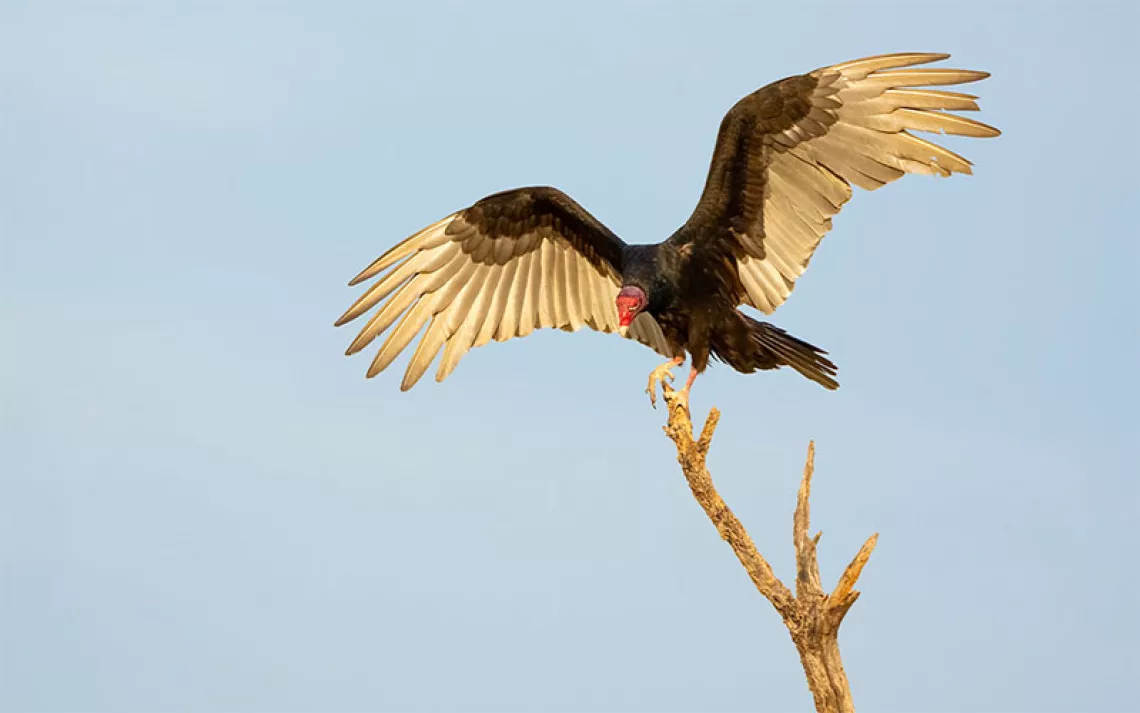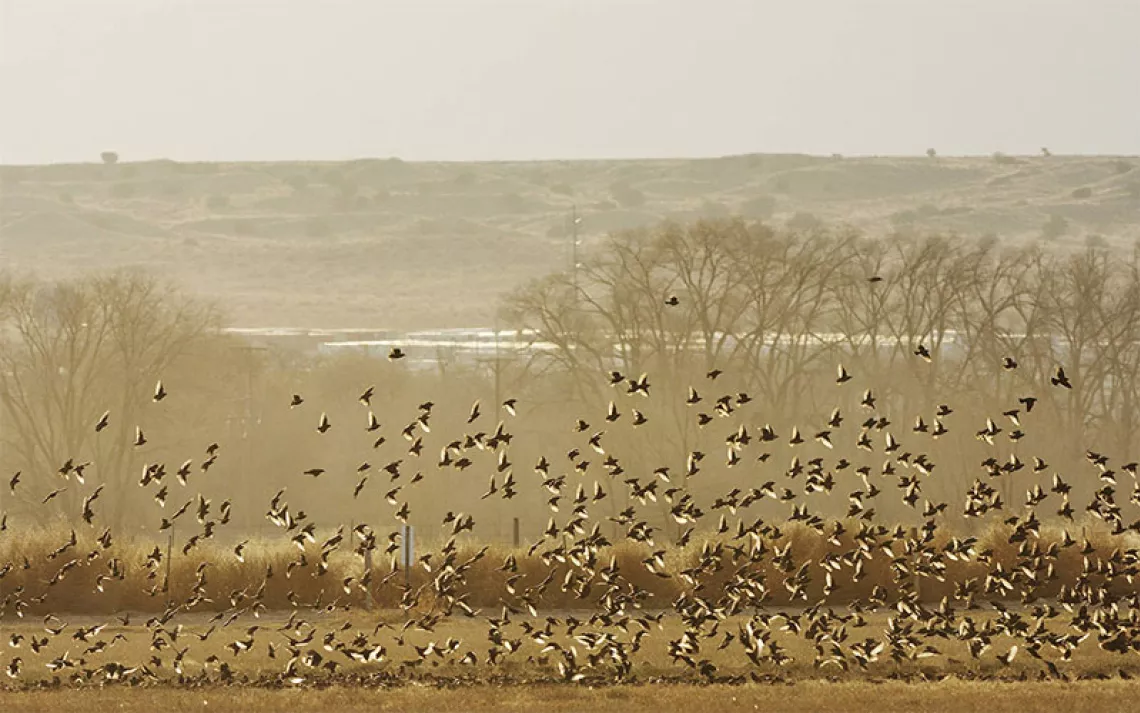Researchers Still Don’t Know Why So Many Birds Died This Fall
It might have been a perfect storm of reasons
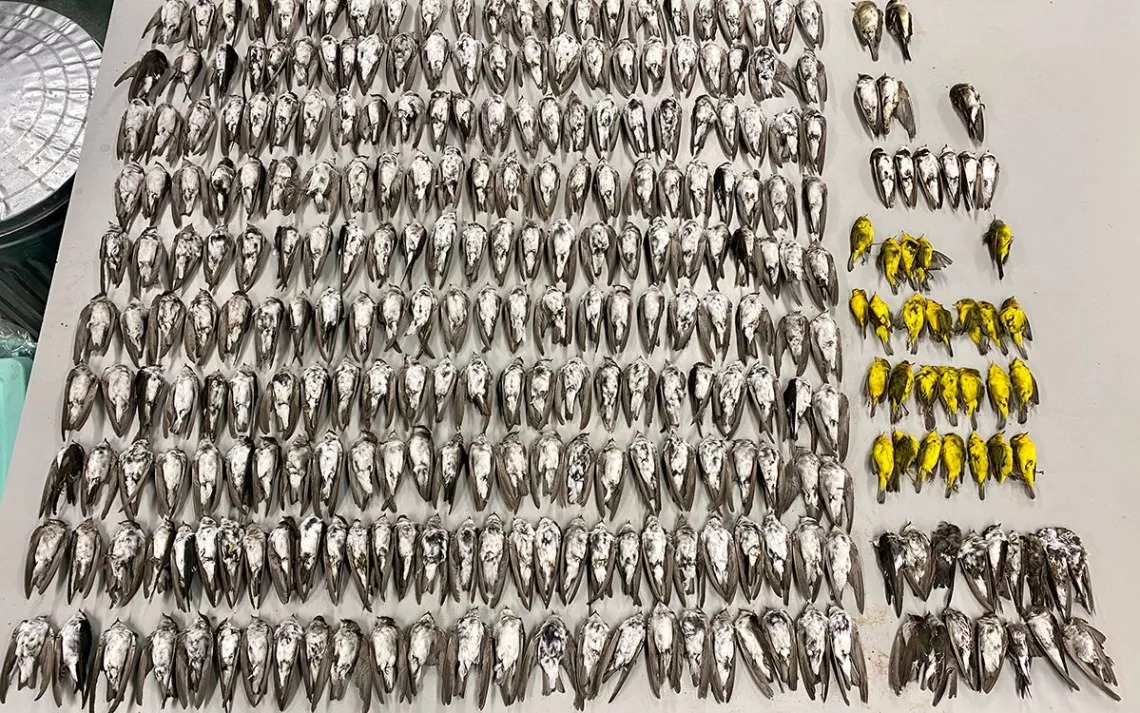
Photos by Jenna McCullough, on behalf of the Museum of Southwestern Biology, where the specimens will be preserved.
It was midnight in Velarde, New Mexico, and graduate student Jenna McCullough was in search of dead birds.
She had driven two hours to a site where on the previous day, September 13, journalist Austin Fisher had stumbled upon a mass of deceased birds and posted a video of the grisly scene on Twitter.
When she saw the video, McCullough—who is studying avian genetics and evolution at New Mexico University—thought, “Oh my god, this is such a massive die-off here, just in one little spot.” She had to go investigate herself.
Now in the darkness picking up carcasses, McCullough felt the lightness of the birds. Of course, birds are light—an adaptation that enables flight—but these ones were particularly boney. And there were hundreds of them.
“It was really incredible. I work with dead birds. I see them all the time. But I had never seen just piles and piles of dead birds in one spot,” McCullough said.
Unfortunately, McCullough was not alone in witnessing such a scene this fall. Across New Mexico, similar swaths of dead birds were discovered as part of an unusual mass mortality event that has baffled researchers. Were the mortalities caused by the drought conditions in the Southwest? A recent cold snap? The smoke from wildfires raging in California? Or some other unknown peril?
Each autumn, billions of birds soar south from Canada and Alaska, passing over the southwestern US on their way to overwinter in Central and South America. While migration is always a risky journey, for thousands of birds this year, it was far deadlier than usual.
Birds literally fell from the sky. Others exhibited strange behavior, with species that normally swoop among trees and bushes seen huddling together on the ground, moving slowly as they searched for insects. There were bright-yellow warblers, shimmering swallows, brown sparrows, and other migratory species. Many were insectivores, or insect-eating birds.
The first recorded incident occurred on August 20, when hundreds of birds were found dead at the White Sands Missile Range military facility in New Mexico. Incidents all over the state followed in mid-September and into October. Whether all these events are related or separate remains unclear.
Researchers have sent carcasses to US Fish and Wildlife laboratories in Oregon and Wisconsin for testing, though results will likely take months. They also put out a PSA for the public to log found dead birds on the iNaturalst app, of which there are currently 980 observations across the western US and into Mexico.
That night in Velarde, McCullough and another graduate student identified 305 dead birds, 258 of which were violet-green swallows. They decided to collect some data for themselves. After weighing the carcasses back at the lab, they found that the average weight of the swallows was 9.5 grams. The birds usually weigh about 14 grams, on average.
The low weight, indicative of starvation, would have made the birds far more vulnerable to the unusual weather event that struck New Mexico between September 8 and 9, when temperatures dropped over 50 degrees and wind and snow whipped through parts of the state.
“If a lack of food contributed to the mortality event, birds would have less fat and no protection against hypothermia. Indeed, of the hundreds of birds we assessed, none had fat stores on their bodies,” wrote McCullough on the American Birding Association website.
Cold also limits the availability of insects, particularly insects flying through the air, which are the primary food source for aerial insectivores like violet-green swallows.
That’s enough evidence for McCullough to pinpoint weather as the culprit. “Birds with extreme weather events during the height of migration are more susceptible to something like this,” she said. “It’s not a sexy story to sell to newspapers that birds died of something that they routinely die of.”
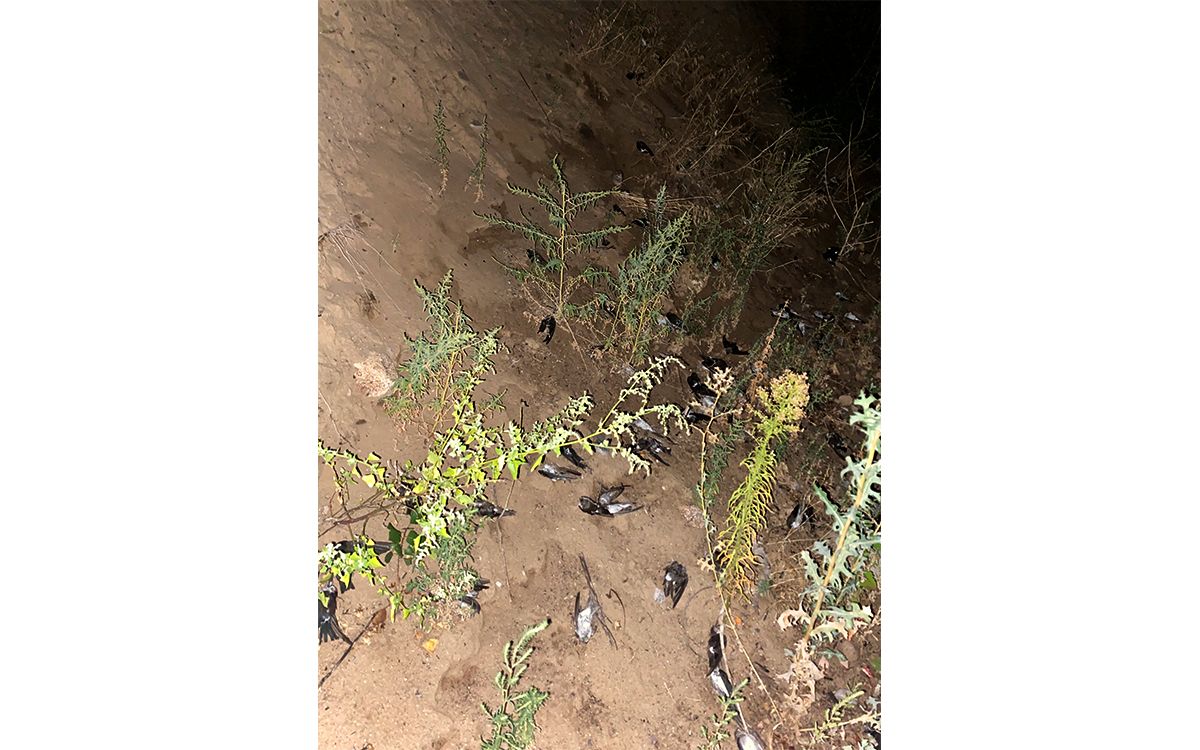
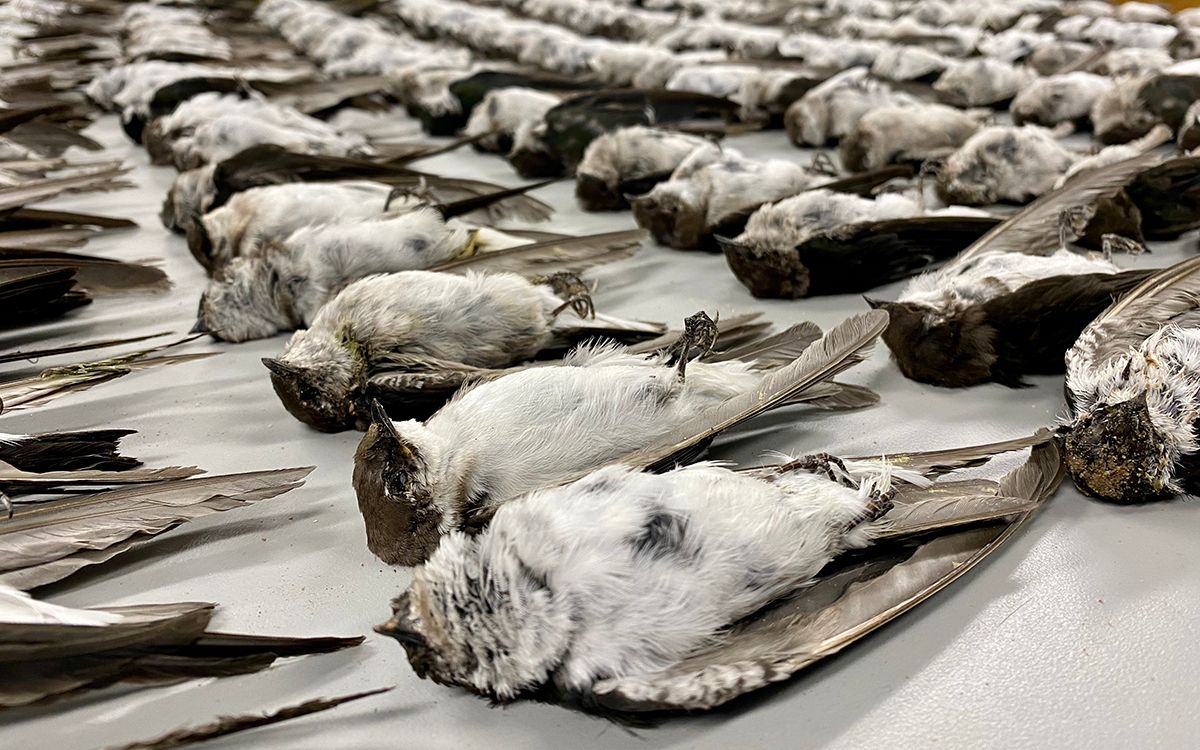
Yet others suspect that different or additional causes are afoot. The thick wildfire smoke that blanketed California and western states throughout late summer and autumn could have harmed the birds’ lungs. Smoke also decreases visibility for birds. One theory suggests that species may have altered their flight paths away from historically food-rich areas and instead went through the food-scarce Chihuahuan Desert of New Mexico.
Additionally, this year the Southwest experienced its worst drought in decades and possibly centuries. Such dry conditions could have limited insect availability. That’s on top of the fact that insect populations are already declining globally at perilous rates, a looming extinction that no doubt spells trouble for insect-eating birds.
Or it could be all of the above. Martha Desmond, an ornithologist at New Mexico State University, told the Las Cruces Sun News that “we saw a large number of mortalities leading up to it and following” the September cold snap, “which indicates that there might be multiple stressors coming together.” Rather than distinct events with distinct causes, these multiple stressors may have created the “perfect storm” of perilous conditions for migratory birds this fall.
Until the US Fish and Wildlife autopsy information is available, however, it is impossible to say conclusively what caused the avian deaths. Mass mortality events are not unheard of for migratory birds and are typically due to extreme weather. Yet with one in four bird species having disappeared from North American in the past 50 years, it’s hard not to feel existential dread about the fate of birds in 2020.
 The Magazine of The Sierra Club
The Magazine of The Sierra Club
